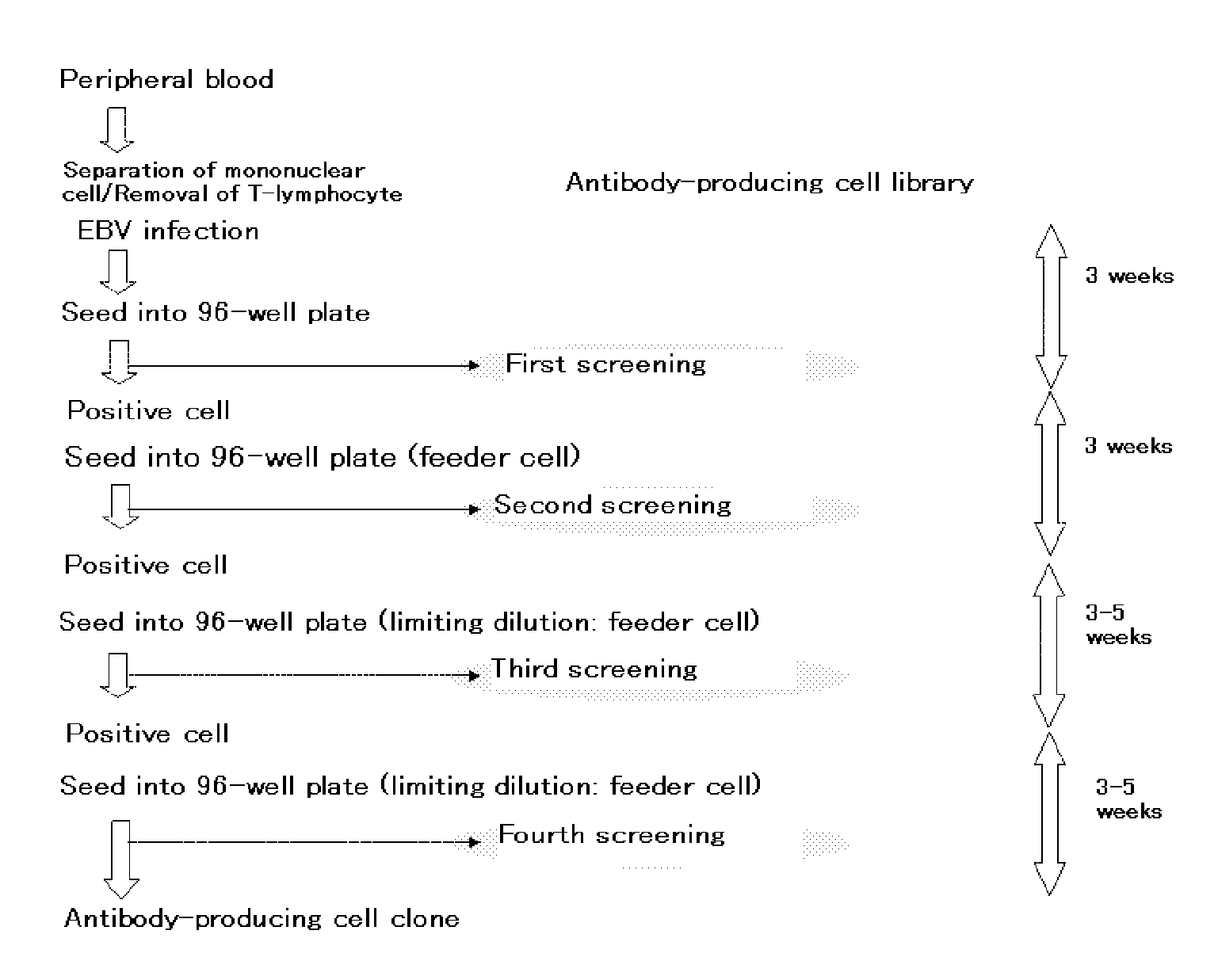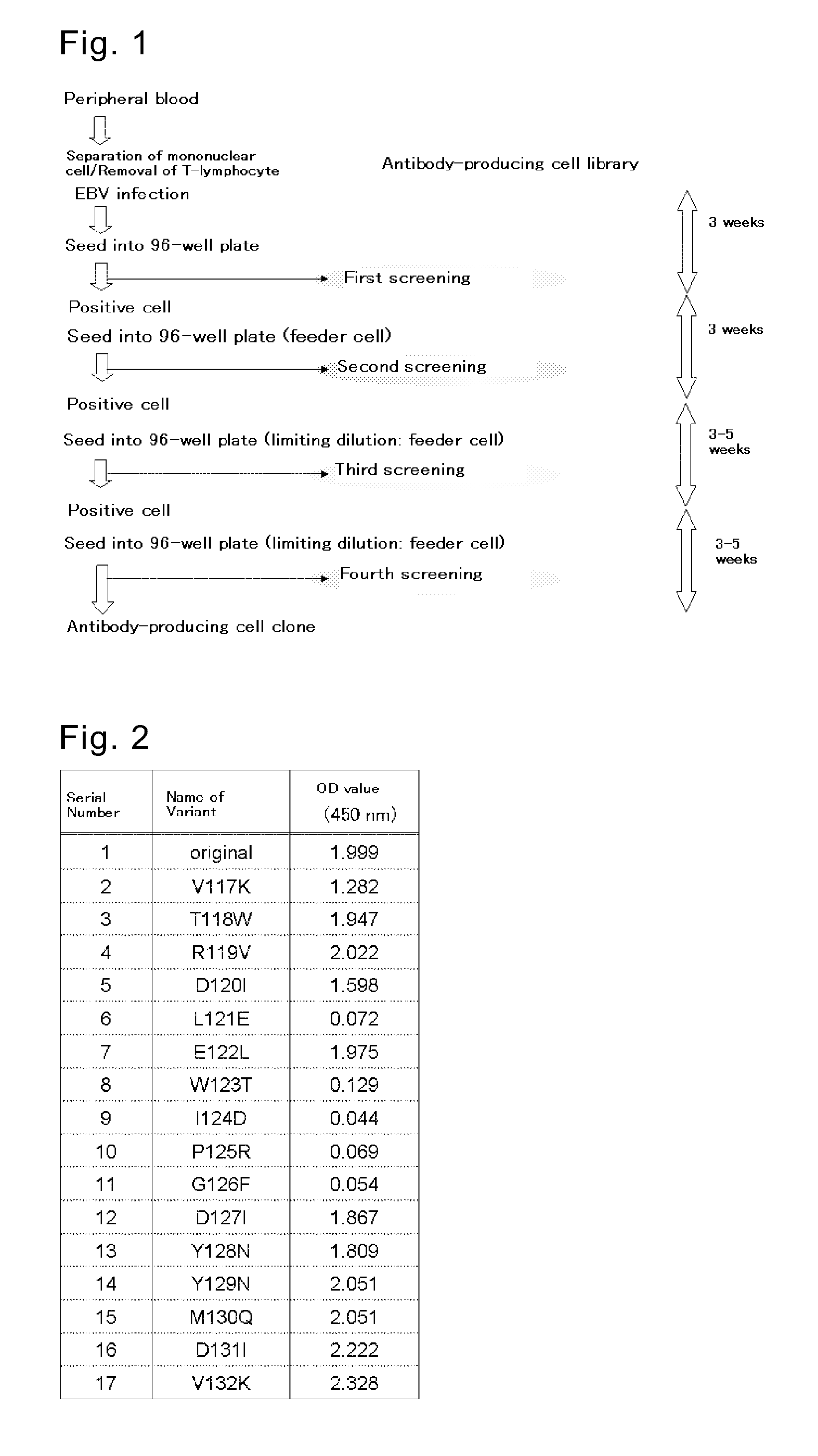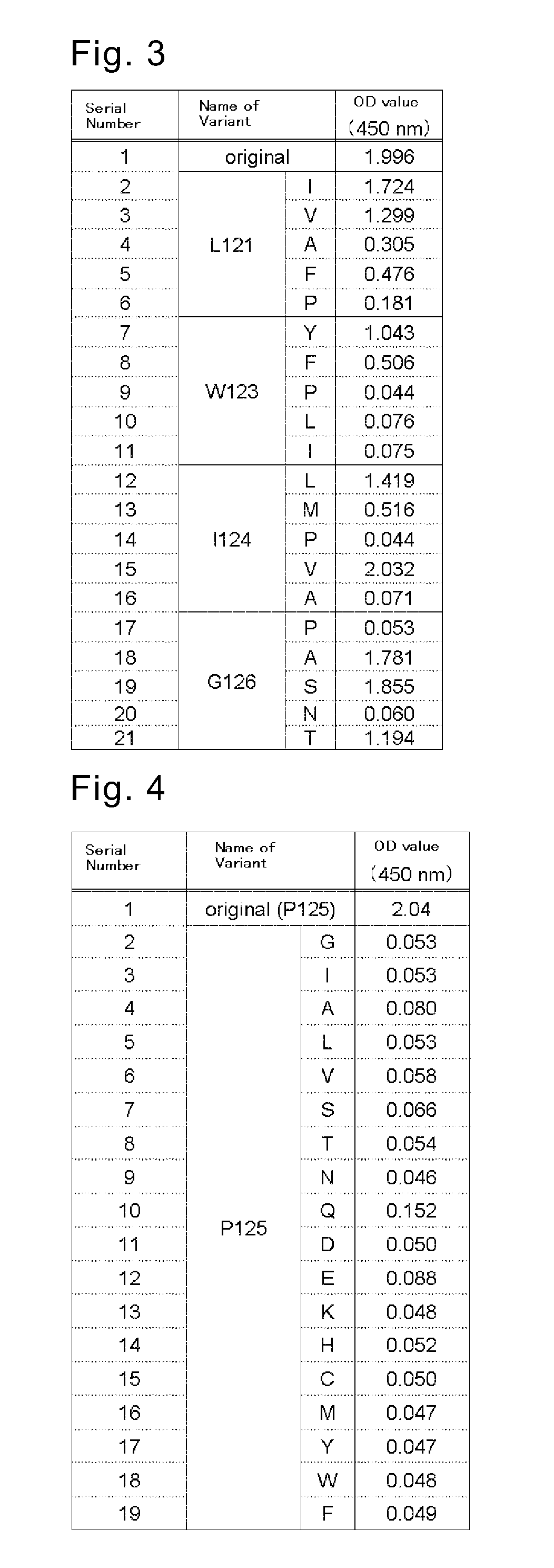Monoclonal antibody capable of binding to specific discontinuous epitope occurring in ad1 region of human cytomegalovirus gb glycoprotein, and antigen-binding fragment thereof
- Summary
- Abstract
- Description
- Claims
- Application Information
AI Technical Summary
Benefits of technology
Problems solved by technology
Method used
Image
Examples
example 1
Separation of Cell Clone that Produces Complete Human Antibody Against HCMV
[0380]A flowchart of steps to the separation of an antibody-producing cell clone is shown in FIG. 1.
[0381]B-lymphocyte was separated from human peripheral blood whose anti-HCMV antibody level in the serum is high, and was infected with EBV. The infected cell was seeded into a 96-well plate. After approximately 3 weeks of cultivation, screening was conducted for an anti-HCMV antibody in the culture supernatant (primary screening). The screening was conducted by ELISA method using a 96-well plate coated with GST-fused HCMV-AD1 or GST-fused HCMV-AD2, targeting antibodies for the major neutralizing epitopes AD1 and AD2 of HCMV (J. Virol., 65, 138-146 (1991), J. Gen. Virol., 73, 2375-2383 (1992), J. Virol., 66, 5290-5297 (1992), J. Virol., 67, 703-710 (1993)). Cells in each well that had been confirmed of anti-HCMV antibody production were diluted, and seeded into a new 96-well plate. After approximately 3 weeks o...
example 2
Identification of Isotype and Subclass of Antibody
[0382]The culture supernatant of the separated antibody-producing cell clone was used to identify the isotype of the produced antibody by ELISA method (literature reference: see Curr Protoc Immunol. 2001 May; Chapter 2: Unit 2.2). For ELISA, a 96-well plate coated with GST-fused HCMV-AD1 or AD2 and an antibody specific for each of the isotypes and subclasses as a secondary antibody were used. The results of the isotype and subclass of the resulting anti-HCMV antibody are shown in Table 2.
TABLE 2Antibody numberTarget antigenSubclassEV2038AD1IgG1λ
example 3
Cloning of DNA Coding for Anti-HCMV Antibody
[0383]cDNA was obtained from total-RNA of the antibody-producing cell by reverse transcription using Oligo-dT primers and was used as a template in a PCR method to amplify the antibody gene. The primers used for PCR were designed based on database of cDNAs coding for human IgG antibody H- and L-chains. In order to amplify full-length H-chain cDNA and L-chain cDNA, 5′- and 3′-terminal primers had a translation initiation site and a translation termination site, respectively.
PUM
| Property | Measurement | Unit |
|---|---|---|
| Length | aaaaa | aaaaa |
| Length | aaaaa | aaaaa |
| Length | aaaaa | aaaaa |
Abstract
Description
Claims
Application Information
 Login to View More
Login to View More - R&D
- Intellectual Property
- Life Sciences
- Materials
- Tech Scout
- Unparalleled Data Quality
- Higher Quality Content
- 60% Fewer Hallucinations
Browse by: Latest US Patents, China's latest patents, Technical Efficacy Thesaurus, Application Domain, Technology Topic, Popular Technical Reports.
© 2025 PatSnap. All rights reserved.Legal|Privacy policy|Modern Slavery Act Transparency Statement|Sitemap|About US| Contact US: help@patsnap.com



